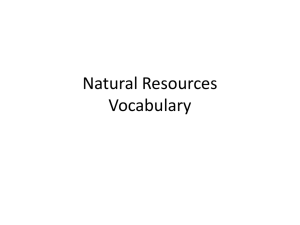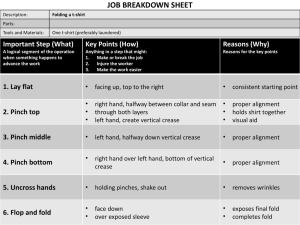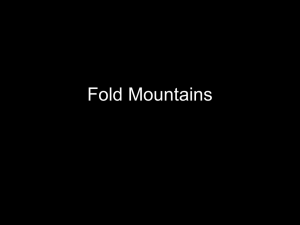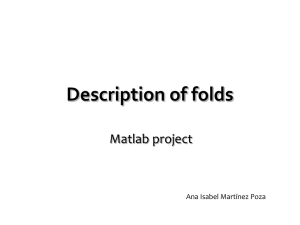Fold geometry
advertisement
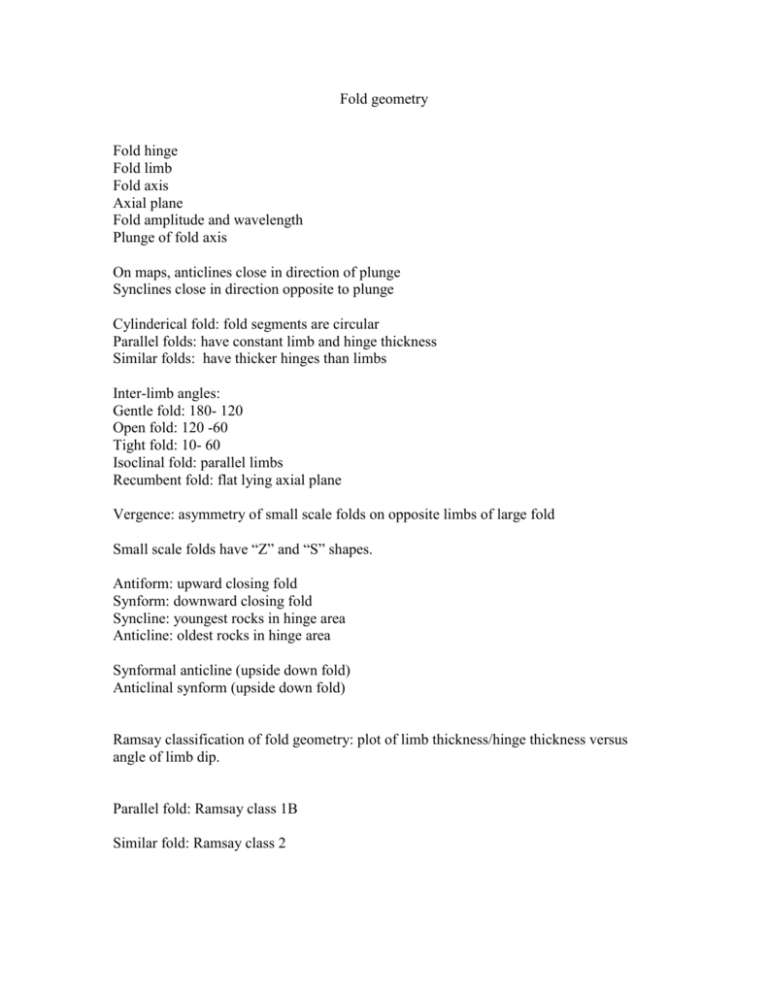
Fold geometry Fold hinge Fold limb Fold axis Axial plane Fold amplitude and wavelength Plunge of fold axis On maps, anticlines close in direction of plunge Synclines close in direction opposite to plunge Cylinderical fold: fold segments are circular Parallel folds: have constant limb and hinge thickness Similar folds: have thicker hinges than limbs Inter-limb angles: Gentle fold: 180- 120 Open fold: 120 -60 Tight fold: 10- 60 Isoclinal fold: parallel limbs Recumbent fold: flat lying axial plane Vergence: asymmetry of small scale folds on opposite limbs of large fold Small scale folds have “Z” and “S” shapes. Antiform: upward closing fold Synform: downward closing fold Syncline: youngest rocks in hinge area Anticline: oldest rocks in hinge area Synformal anticline (upside down fold) Anticlinal synform (upside down fold) Ramsay classification of fold geometry: plot of limb thickness/hinge thickness versus angle of limb dip. Parallel fold: Ramsay class 1B Similar fold: Ramsay class 2 Fold models Parallel folds: (class 1B) a) Layer buckling model: outer layer undergoes extension, inner layer undergoes compression, separated by neutral surface. Two dimensional strain (plane strain) – no strain parallel to fold axis b) Flexural slip model: phone book model – slip between bedding layers. Similar folds (class 2): vertical deck of cards model – shearing parallel to axial plane.





